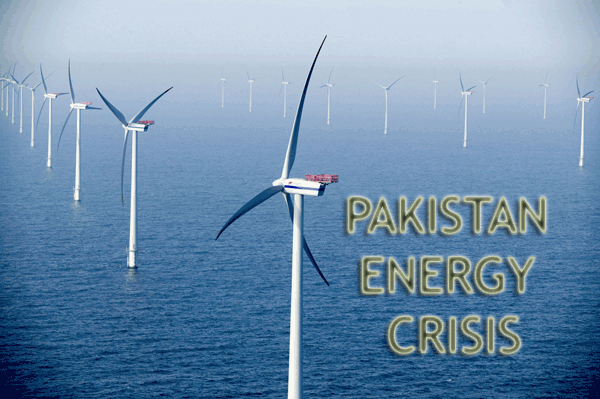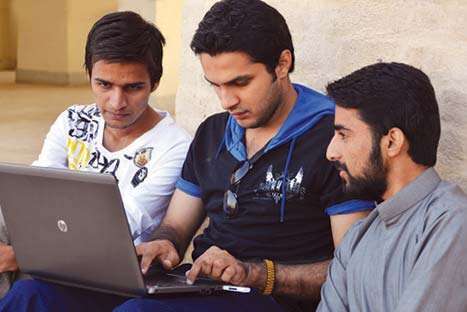Developing nations do confront energy crisis due to high demand on the back of rapid industrialization, growing commercial activities and domestic consumption, hiked by the expanding middle class, which demands a better life. Often, the energy demand outpaces its supply in economies, which strive for rapid industrial and economic growth.
China understood this in the very beginning that it needs sufficient energy supplies to become a global business leader. So the Chinese immediately went for ‘Three Gorges Hydropower plants’ which is the world’s largest one location hydro-power facility. Today China’s energy growth matches its GDP growth. In fact, China is also the global suppliers and contractors in the field of power, oil and gas plants and other facilities.
Energy Crisis in Pakistan
India, our next door neighbor, is another example. We are always excited to compare Pakistan with India. In the energy sector the comparison appears relevant as once Pakistan was well ahead of India in energy self-sufficiency. But India is catching up fast. Indians also understood that for achieving a competitive and leading position in the global world, economically and politically, the backbone is “self- sufficiency in energy.” Their GDP growth of over 7 percent in the last many years has resulted in rapid energy demand which out beats the energy availability, hence the energy shortage and crisis. But there are no significant riots because the public sees gradual progress happening and have a hope that soon the crisis will be over.

Under a win-win public and private partnership, India is implementing a well-defined plan and strategy to meet the energy demand systematically. The government understands that the time is running out. Energy demand has to be met on a fast track basis and it realizes that alone this cannot be done. Therefore, the Indian government motivated business giants like Tata, Reliance Group and others to invest and manage the energy sector.
Today, Mumbai’s electricity is managed by Reliance and Delhi’s by Tata. Further, the government in partnership with industry and farmers implemented standalone energy packages for different segments based on indigenous raw material like power plants clusters for sugar mills based on baggage, biogas power plants clusters for agriculture based on cow dung and other waste materials.
In partnership with Suzlon,
India has added significant local value addition in the wind power technology and is today producing over 10 megawatt of wind power, which is half our installed capacity and nearly the same as our available power. Most of these projects being green and environment-friendly are substantially funded under grants by global funding agencies. Agreement with USA has opened the door for India to acquire nuclear power plants which is a significant development.
Energy Crisis:
Today, India is winning in its endeavors to overcome energy crisis. And once New Delhi achieves this goal, India is well positioned to qualify in the rank of OECD developed nations with tremendous political and economic advantage in the global arena.
How, did this happen in India whose infrastructure, inclusive of energy sector, was pathetic and far behind Pakistan till 2000? The answer is that the public and private sectors in India realized that without world class infrastructure, it cannot be positioned in the category of developed nations. Indians changed their mindset for governance and opted for zero tolerance in enforcing good governance. Corrupt ministers and government functionaries have been convicted and jailed to set examples. Today India’s businessmen have a significant influence on Indian politics and policies.
What went wrong, in the meantime, in Pakistan? We were once far ahead of India in our infrastructure and the foreign investors praised it.
Even in as late as 2006, Pakistan was negotiating with India to sell surplus power driven out of the successful induction of independent power producers and some public sector hydel projects. PSO, OGDCL, SSGC and other firms were rated as blue chip global companies and as role models.
In the subsequent years, Pakistan nosed dived to its lowest, purely on account of incompetence driven by lack of vision, strategy and above all poor governance on account of political influence and considerations. This is the main factor that destroyed our energy sector and standing as a developing nation. Today, Pakistan has no significant new foreign direct investment in the energy sector, while the performance of its public sector remains pathetic.
A good 75 percent of Pakistan’s energy crisis is attributed to poor governance. If good governance is provided on a sustainable basis, the crisis will be diluted to manageable levels in a short-period.
Let’s focus on the quality of governance in vogue in the energy sector in Pakistan. In the power sector, Pakistan has an installed capacity of about 21,000 megawatt. But at most times the available capacity for consumers is around 12,000 megawatt in winters and around 14,000 in summers.
Where is the balance 7000 to 9000 megawatts?
A good part of it is the depleted generation capacity of the power plants which can be restored with upgrades. But greed motivates the decision makers to go for new plants. The remaining missing capacity is on account of pilferage mostly by the influential people. The rest is on account of circular debt, which limits the government to restrict power off take from the independent power producers. All this is on account of poor financial and technical governance which, by and large, starts from the top and filters down to lower levels.
Same is the position in the oil and gas sector. A good 14 percent are transmission losses largely on account of pilferage and organized theft.
One has to simply evaluate credentials and the conduct, by and large, of the management installed to manage this sector.
OGDCL
Let us evaluate OGDCL, which once was a blue chip company. It is a prime public sector organization responsible to explore oil and gas and make it available to the people. In the last many years, it hardly made any worthwhile output as it managing directors kept coming and going. One of them is currently under NAB investigations.
Under political influence, compounded with greed at all levels, un-controlled CNG outlets have been awarded at the expense of industry and power sector.
Alternate Energy Development Board, funded by taxpayers’ money, is responsible to plan, develop and facilitate alternate energy generation in Pakistan in field of wind power, solar, biomass and biogas and other fields. Its output is probably almost negligible while billions of rupees have been spent to sustain this organization.
Green Energy Projects:
China and India have successfully launched green energy projects under grants from global donors. Moreover, both these countries, each year, claim millions of dollars on account of carbon credits under the Kyoto Protocol. Pakistan is also a signatory to the same, but, we developed no project to claim it. Better would be to windup AEDB and utilize this money in granting direct subsidy to potential alternate energy power producers.
There appears no strategic planning or the will to provide affordable energy to the people of Pakistan. The present energy mix is not sustainable. In good days, it used to be 65 percent hydel and 35 percent thermal. Today it is the other way around.
A better energy mix at affordable cost is possible as a fast track measure while we work in parallel on long-term hydel and other large projects. Things may go worse as the lead time in the energy projects implementation is long. But with good and professional governance, the energy sector can be turned around in a short period by optimizing the performance of present energy assets and resources while in parallel bringing on board new initiatives.
Pakistan has some impressive assets in the energy sector. Our gas distribution and transmission system and network are among the World’s largest. It has the capacity to absorb a bigger load and can contribute to dilute the gas shortage.
Pakistan Talent Professionals:
Pakistan has talented professionals and managers in the energy sector and the country has vast natural energy resources and assets. We only have to team the two together in an enabling environment to provide fast relief to the nation.
The writer is Director Energy
Resource Group and former president of ABB Asea Brown Boveri and Overseas Investors Chamber of Commerce and Industry.




Comments are closed.